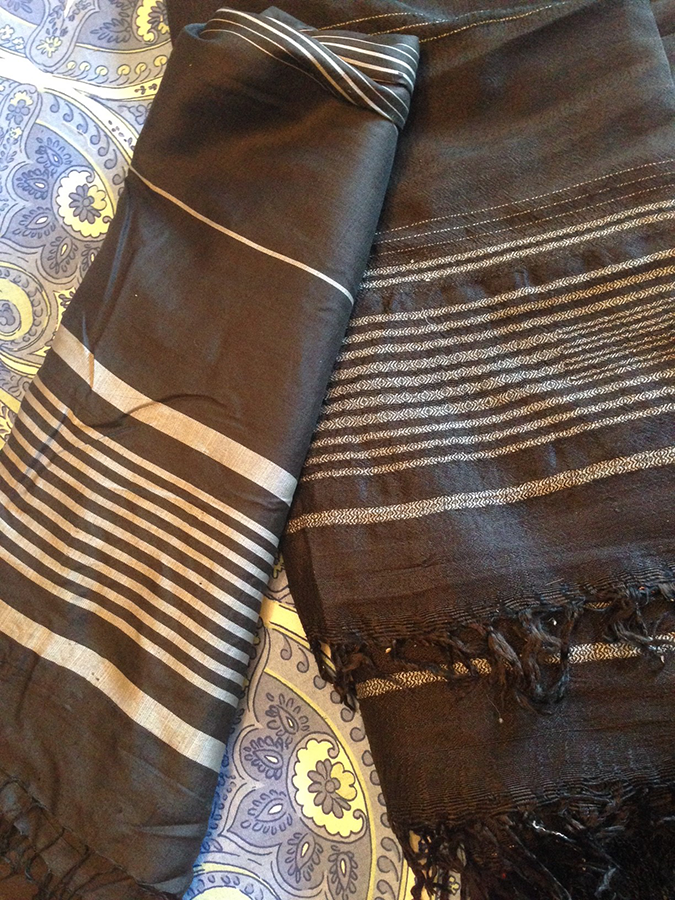These two silk head scarves from Homs offer a glimpse into the wide variety of Syrian silk textiles.
Silk indicated power and wealth, and Rome imported its silk from Syria and Lebanon. Palmyra, situated in the middle of the Syrian desert, achieved wealth in part to its trade in silk.
Silk was usually bought by weight, and a woman who could not afford a silk robe could invest in silk headgear.
Headcloths varied in pattern and coloring from village to village. Here two fringed scarves of distinct patterns and weight are shown: on the left a lightweight tightly woven piece, and on the left a heavier piece. This type of scarf called homsiyye (from Homs) was a favorite in the villages just north of Damascus. The most common color was black, but sometimes a dark red shade was worn.
Most frequently the homsiyye was worn as an asby headband over the veil, with the fringed or tassled edges hanging down the wearer's back.
The homsiyye scarves could also be woven with silver threads, as in the following example.
|

